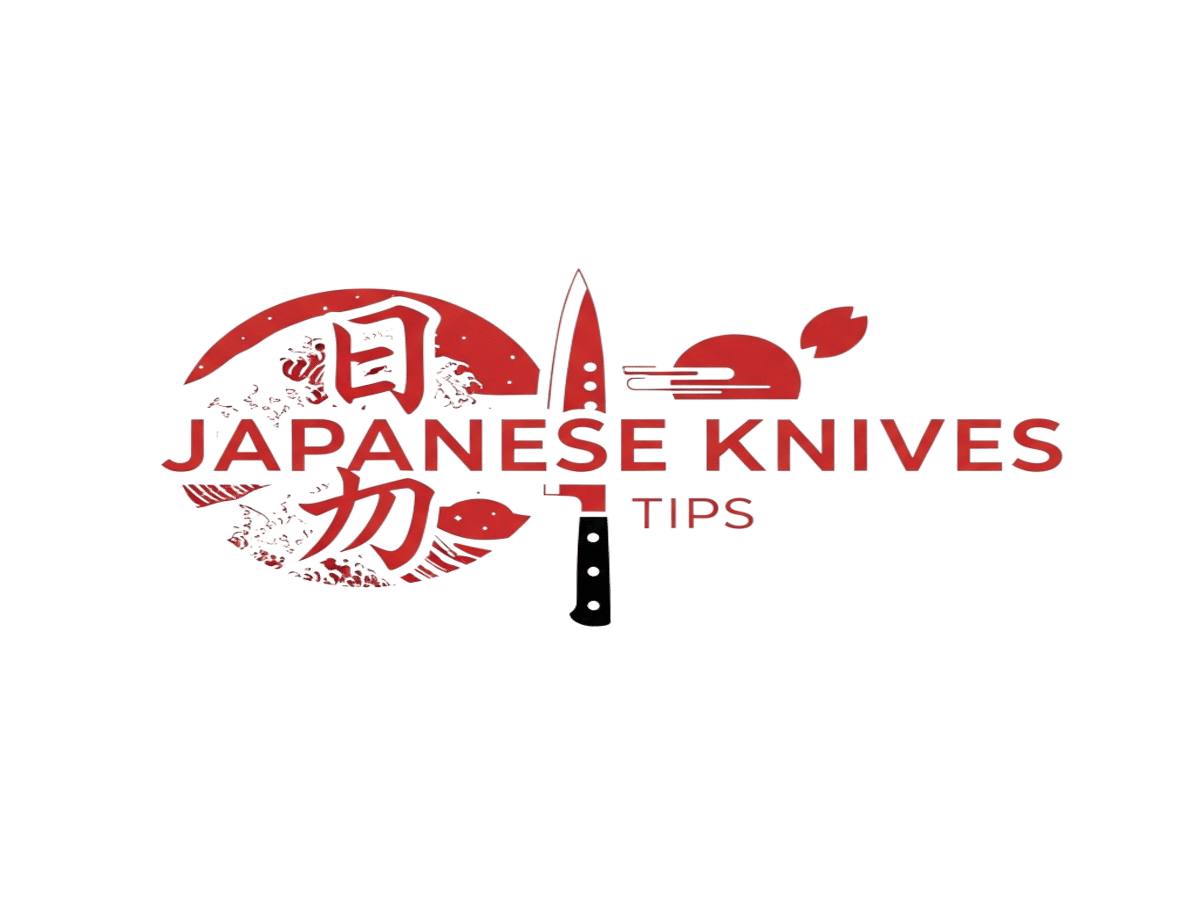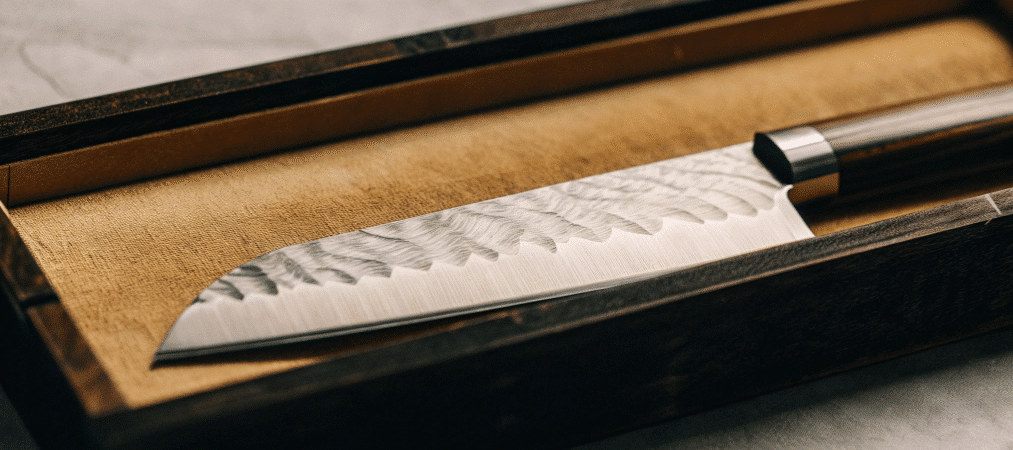Hey there! If you’re curious about the Japanese Bunka knife, you’re in the right spot. This knife is a favorite for many cooks who want a tool that’s sharp, precise, and ready for a bunch of kitchen tasks. I’ve spent some time with this knife, and I want to share what makes it stand out and why it might be a great fit for your cooking style.
A high-quality Japanese Bunka knife isn’t just a tool—it can become a lasting part of your cooking life, offering durability and long-term value every time you prepare a meal.
- Introduction to Japanese Knives
- Japanese Knife History and Culture
- Features and Materials
- What’s the Bunka Knife All About?
- How the Bunka Knife Compares to Others
- Why I Like the Bunka Knife
- Using the Bunka Knife in Your Kitchen
- Handling and Safety
- Taking Care of Your Bunka Knife
- Picking the Right Size
- What About the Handle?
- Why You Might Choose a Bunka Knife
- A Few Tips to Remember
- Wrapping Up
- FAQs
Introduction to Japanese Knives
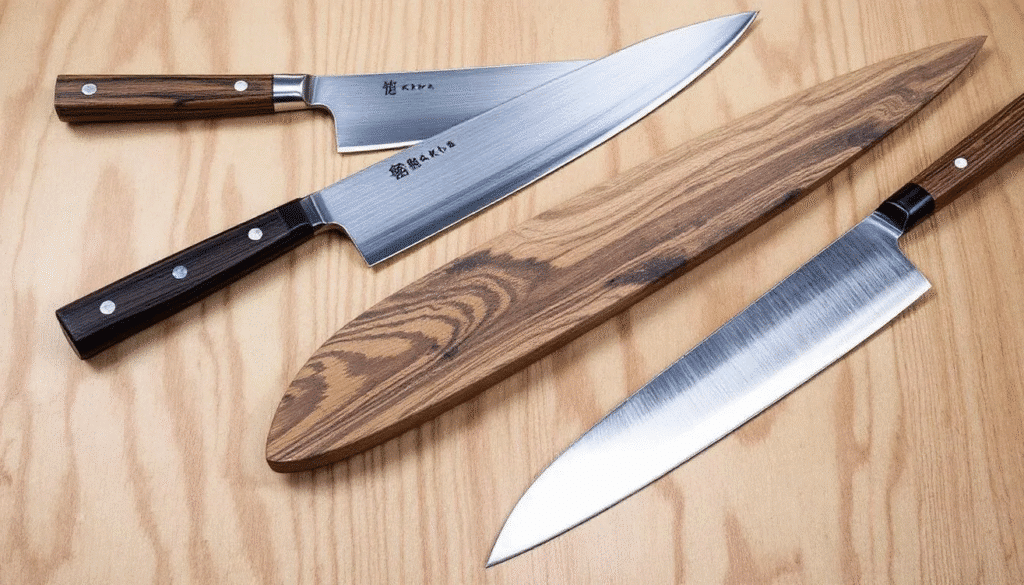
Japanese knives are amazing.
They’re sharp.
They’re beautiful.
They work for any cooking style.
Are you a home cook? A professional chef? Either way, a Japanese knife like the Bunka can change everything. The Bunka knife has something special. That distinctive shape. That curved blade. That sharp point. People love it for good reasons. It’s versatile. It’s precise. You know other favorites like the Gyuto and Santoku? The Bunka stands right alongside them. Why? That double bevel edge makes all the difference. Easy to use for so many tasks. Want to slice vegetables? Done. Need fine detail work? No problem. These knives handle everything. They’re perfect for anyone who values performance. And style? They’ve got that too. Understanding what makes Japanese knives unique helps you choose right. Pick the blade that fits your cooking style. Get the most from every cut you make.
Japanese Knife History and Culture
Japanese knives have a long story. It goes back hundreds of years. Tradition meets innovation. That’s how it started. Early Japanese knife makers learned from China and Korea. They picked up techniques. But they didn’t stop there. Japanese craftsmen made their own styles. They had to. Local ingredients were different. Cooking methods were different. So they created special knives. The Gyuto cuts meat. The Santoku slices vegetables. The Bunka does everything. To learn more about the types of Japanese knives, check out this guide. Then came the Meiji period. Western cooking arrived in Japan. This changed things. New knife designs appeared. They mixed the best of both worlds. Traditional Japanese precision met Western versatility. Today, Japanese knives are the best. People prize them for quality. They’re sharp. They pay attention to detail. Home kitchens use them. Professional kitchens use them. Everyone uses them. You’re chopping fish for sushi? These knives work. You’re prepping vegetables for stir-fry? They work for that too. These knives offer precision. They offer reliability. Cooks around the world trust them. That’s why they matter.
Features and Materials
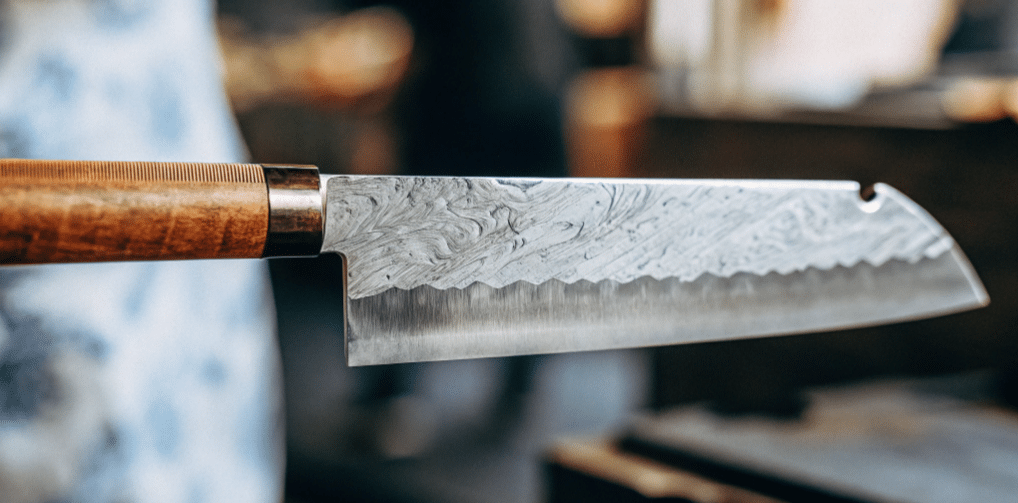
Japanese knives are special. The Bunka is even more special. Why? It’s all about the materials. And the care that goes into making them. Most Japanese knives use high-carbon steel. This steel is sharp. Really sharp. And it lasts. The Bunka has a double bevel edge. What does that mean? You can cut both ways. Push cutting works. Chopping works too. The blade is shorter than a Gyuto. This makes it easier to handle. Perfect for detailed work. Home cooks love this. More control in the kitchen. The handles? Often traditional Japanese wood. They feel good in your hand. Balanced too. Some modern ones use different materials. For durability. Here’s what you get: a sharp, thin blade and a great handle. Clean cuts with less effort. Accurate too. The Bunka knife works for many kitchen tasks. It’s reliable. It’s precise. It’s what you need.
What’s the Bunka Knife All About?
The Bunka knife is a Japanese kitchen knife designed to handle a variety of jobs. It’s got a blade that’s a bit shorter than some other knives but still wide enough to give you control when chopping or slicing. One of its coolest features is the k tip — a sharp, pointed tip shaped like a reverse tanto. This tip is perfect for getting into tight spots or doing some precision work.
Its blade has a double bevel edge, which means it’s sharpened on both sides. This makes it easier to use for folks who might not be used to single-bevel Japanese knives. The Bunka’s blade is usually flat with a slight curve, which helps with push cuts and chopping veggies or meat without much fuss. The heel of the blade plays an important role in facilitating push-cuts and provides extra control during chopping tasks.
How the Bunka Knife Compares to Others
You might be wondering how the Bunka stacks up against other Japanese knives like the Gyuto or Santoku. Here’s the deal:
- The Gyuto has a longer, more curved blade and is great for rocking cuts. It’s often called the Japanese version of the Western chef’s knife.
- The Santoku has a wider blade with a rounded tip and is fantastic for chopping veggies and slicing.
- The Bunka sits somewhere in the middle. It’s got a wider blade like the Santoku but features that sharp k tip, which the others don’t have.
The main difference between Bunka, Santoku, and Gyuto knives comes down to the blade tip shape, blade length, and intended use. The Bunka has a pointed tip for precision, the Santoku has a rounded tip for general chopping, and the Gyuto features a longer blade suited for slicing and rocking cuts. Gyuto knives are often considered the Japanese equivalent of a chef’s knife, especially the Western chef’s knife, which is known for its slightly curved blade and versatility in Western kitchens. Gyuto knives are typically longer and favored by professional chefs for their ability to handle larger cuts and precise tasks. In contrast, the nakiri is a traditional Japanese knife designed specifically for cutting vegetables, with a straight edge and rectangular shape, making it less versatile than the Bunka but excellent for its intended purpose. To decide which knife is best for you, consider your cooking habits and preferences—whether you need a multi-purpose tool or something specialized for certain tasks.
If you want a knife that’s versatile and good for both veggies and meat, the Bunka is a solid choice. It’s especially handy if you like a knife with a bit of a sharper point for detailed work.
Why I Like the Bunka Knife
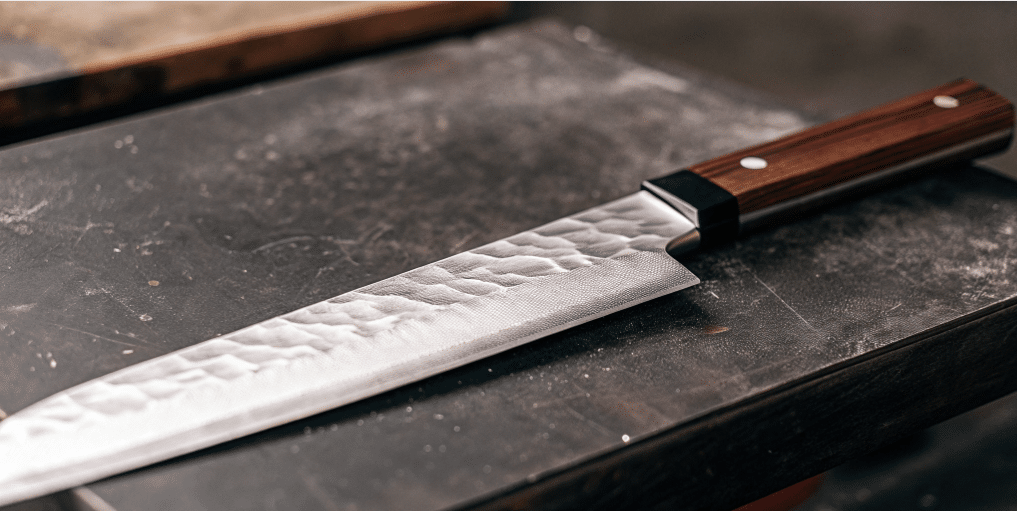
When I first picked up a Bunka, I noticed how light it felt. The wood handle gives it a natural grip that doesn’t slip, even when my hands are wet. The blade’s height gives me plenty of knuckle clearance, so I don’t have to worry about banging my fingers on the cutting board. The blade is also thinner than many other knives, making it more nimble and precise for detailed work.
The sharp point lets me get into corners easily, whether I’m peeling garlic or trimming fat from meat. The flat edge makes chopping veggies quick and clean, and the blade’s length is just right for my kitchen space — not too long, not too short.
Using the Bunka Knife in Your Kitchen
This knife works well in home kitchens because it’s easy to handle and doesn’t take up much space. You can use it for:
- Cutting vegetables like onions, carrots, and peppers—the Bunka’s blade shape and sharp tip make it especially suitable for precise vegetable preparation.
- Slicing meats into thin strips or chunks—the knife is also great for slicing meats thanks to its versatile blade profile.
- Mincing garlic or herbs with precision.
- Carving fish for sushi or sashimi thanks to the sharp tip.
The Bunka excels at push cuts, making it easy to slice through a variety of ingredients. Its blade profile is suitable for different kitchen tasks, from vegetables to meats and fish.
The flat edge means you can chop straight down without rocking the blade, which feels natural once you get the hang of it.
Handling and Safety
Got a Japanese knife like the Bunka? Nice choice. But you need to be careful. The sharp point is great. The curved blade is perfect. But they mean business. Always grip that handle tight. Keep your fingers curled under. Away from the blade. No accidents here. The flat edge makes chopping easy. Straight-down motion works best. But keep that knife away from your body. Always cut away from yourself. Smart move. Your knife getting dull? Time to sharpen it. Not just for better cuts. For safety too. Dull blades slip. Slipping blades cause injuries. Nobody wants that. Practice good habits. Keep that blade sharp. You’ll love the precision. You’ll love the control. Japanese knives are famous for this. Your kitchen time stays safe. Your kitchen time stays fun.
Taking Care of Your Bunka Knife
Keeping your Bunka sharp is key. Bunka blades are made from advanced steel alloys with high hardness, which improves their durability and edge retention. Since it’s made with high-quality Japanese steel, it holds an edge well but still needs regular sharpening. A whetstone works best, but a good sharpener designed for Japanese knives will do the trick too.
After washing, dry it right away to avoid rust spots. Store it in a knife block or on a magnetic strip to keep the edge safe. Treat it well, and it’ll stick with you for a long time.
Picking the Right Size
Bunka knives come in different sizes, usually between 6.5 inches and 8 inches in blade length. If you have a smaller kitchen or prefer handling smaller ingredients, a shorter blade is a good pick. For bigger chopping jobs or slicing larger cuts of meat, a longer blade will help you get the job done smoothly. Some cooks may find longer Bunka knives more suitable for slicing larger vegetables or bigger cuts of meat, as the extra length offers better control and smoother cuts.
What About the Handle?
You’ll find Bunka knives with either traditional Japanese handles made from wood or Western-style handles. The wooden handles are lighter and give you a good balance, while Western-style handles might feel more familiar if you’re used to chef’s knives from the West.
It’s all about what feels comfortable in your hand. I prefer the wooden handle for its grip and weight, but some folks like the heft of a Western-style handle.
Why You Might Choose a Bunka Knife
If you want a knife that’s:
- Easy to control,
- Great for chopping both meat and veggies,
- Has a sharp tip for detailed work,
- And fits nicely in a smaller kitchen,
then the Bunka knife could be just right.
Bunka knives are trusted by chefs around the world for their versatility and high performance in professional kitchens.
It’s a versatile tool that pairs well with other Japanese knives like the Gyuto or Santoku but can also stand alone as your main kitchen knife.
A Few Tips to Remember
- Don’t forget to sharpen your knife regularly.
- Use the tip for precision cuts and the flat edge for chopping.
- Pair the Bunka with a cutting board that won’t dull the blade quickly.
- Avoid cutting through bones or frozen food to keep the edge sharp.
- Remember, there is no wrong choice between Bunka and Gyuto knives—both are excellent options depending on your needs.
Wrapping Up
The Japanese Bunka knife is a handy, sharp, and versatile knife that can make your cooking easier and more enjoyable. It’s great for home cooks who want a reliable tool that does a bit of everything without taking up too much space.
Give it a try, and you might find it becomes your go-to knife for slicing, dicing, and chopping your way through all kinds of food.
Happy cooking!
FAQs
What makes the Bunka knife different from other Japanese knives?
The Bunka stands out because of its sharp, pointed “k tip” and a wider blade that’s great for chopping vegetables and cutting meat. It’s shorter than a Gyuto but still gives you good control. Unlike the Santoku, which has a rounded tip, the Bunka’s tip is perfect for precision work, like trimming or slicing small pieces.
Can I use a Bunka knife for all kinds of cooking?
Yes, the Bunka is pretty versatile. It works well for slicing vegetables, cutting meat, and even mincing herbs. Its flat edge is great for chopping straight down, not just rocking the blade. It’s a solid choice if you want one knife to handle most kitchen tasks without needing a bunch of different knives.
How do I keep my Bunka knife sharp and in good shape?
Keep it sharp by using a whetstone or a sharpener made for Japanese knives. Wash it by hand and dry it right away to avoid rust. Store it somewhere safe like a knife block or magnetic strip. Avoid cutting through bones or frozen food to keep the edge sharp longer. A little care goes a long way with this knife.
